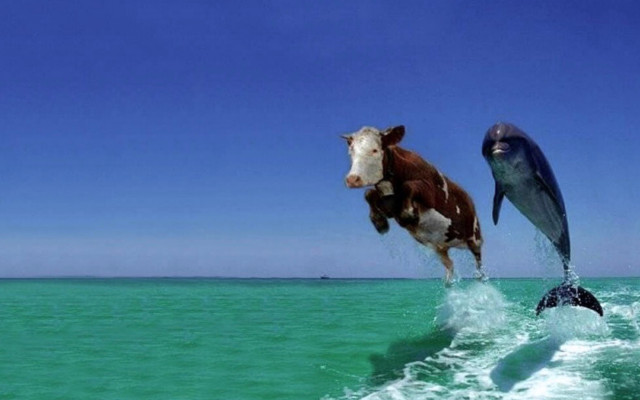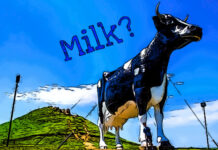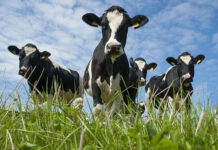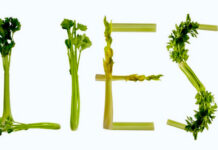The phenomenon of
milk sounding
, which we have already reported on Galatines and Milk Slices, is enriched by a new episode. Even Sangemini mineral water, in its latest advertising campaign, is compared to milk. What else is missing from the theater of deception?
Outlawed comparative indication
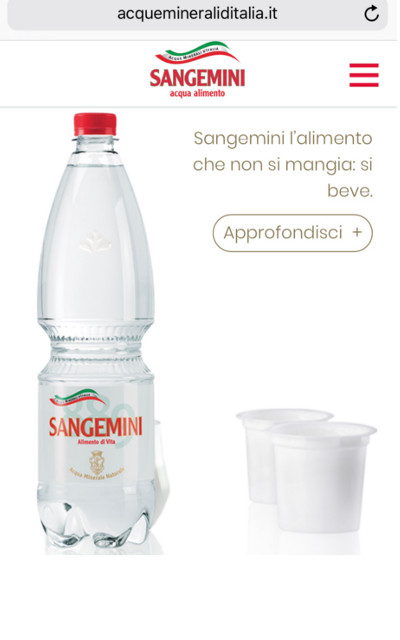
‘1 liter of Sangemini contains the same amount of calcium as two glasses of milk (125 ml each) or two pots of yogurt (125 gr. each).’ Are you kidding me?
The Nutrition & Health Claims Regulation, NHC, contemplates the possibility of making comparative nutrition claims (1) under the following conditions.
1) The comparison must be made between identical quantities of foods that belong to the same category. That is, between products united, according to prevailing interpretation, by
– consumption occasion (e.g., breakfast, snack, appetizer, meal),
– Identity of raw materials (e.g., milk, fruit),
– process (e.g., fruit juices or fruit nectars, fresh dairy products or hard cheeses).
2) The difference between the compared foods must be significant in the sense of justifying one or more of the nutrition claims mentioned in the exhaustive list in Annex to EC Regulation 1924/06. It follows that:
– boasting of increased or reduced nutrient rate (+30 percent), reduced calorie content (-30 percent), reduced micronutrient content (-10 percent) or salt/sodium content (-25 percent) is allowed,
– Comparison between foods whose differences in energy value, nutrients or micronutrients are less than the above limits is not allowed. It is therefore forbidden, for example, to claimequivalence of intake between a beverage and a fruit ration.
3) The benchmark is the average of the best-selling foods in the relevant market, in the relevant category, still on the shelf.
Because of the above, it is completely inadmissible to point out the equivalence in calcium contents of one liter of mineral water compared with 250 ml of milk and yogurt. Both because they are foods of a different nature and because the ill-concealed significant difference is against rather than in favor of Sangemini.
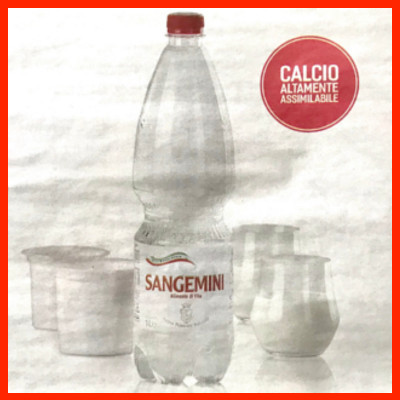
Deceptive advertising and unfair trade practices
Sangemini’s misleading advertising is even more serious because to the illegal comparison with milk and yogurt it adds the detriment of the latter. ‘Nofat, no calories and no risk of intolerance,’ the web page reads, immediately after the dairy recall.
A blatant violation of the ban on raising doubts about the safety or nutritional adequacy of other foods. (2) Aggravated further by the overall manner of presentation, where the Sangemini water bottle is displayed alongside two glasses of milk and as many pots of yogurt (!).
The ‘bioavailable, i.e., highly assimilablecalcium‘ that Sangemini’s advertising claims with great pomp is an unproven and outlawed health claim. There are as many as eight health claims for calcium in foods authorized in Europe. But these do not include any theorem about the ‘bioavailability’ of Umbrian water, which is therefore misleading. (3)
Checks and penalties
It is the duty of the Health Authority to enforce the administrative penalties prescribed for violation of the claim regulation. (4)
The Institute for Advertising Self-Discipline, IAP, can also intervene ex officio-without needing to receive a referral-to order the stop of misleading advertising.
The Competition and Market Authority, so-called Antitrust Authority, in turn has the power to intervene and apply administrative penalties of up to 5 million euros to punish unfair business practices. Which may well materialize, as seen in the Barilla case, with outlawed claims.
Dario Dongo
Notes
(1) See reg. EC 1924/06, Article 9. Testo consolidato su http://eur-lex.europa.eu/legal-content/IT/TXT/HTML/?uri=CELEX:02006R1924-20141213&qid=1506978554407&from=EN
(2) Reg. EC 1924/06, Article 3.2.b. There is at the same time a violation of reg. EU 1169/11, Art. 7.1.c, as the absence of fat and calories is common to all mineral waters
(3) See reg. EU 432/12 as amended. See pages 8 and 9 of the consolidated text, at http://eur-lex.europa.eu/legal-content/IT/TXT/PDF/?uri=CELEX:32012R0432&qid=1507018660328&from=EN
(4) See d.lgs. 27/2017. For analysis of the decree, please refer to http://www.foodagriculturerequirements.com/category/approfondimenti/nutrition-health-claims-dario-dongo-illustra-il-decreto-sanzioni#
Dario Dongo, lawyer and journalist, PhD in international food law, founder of WIISE (FARE - GIFT - Food Times) and Égalité.


